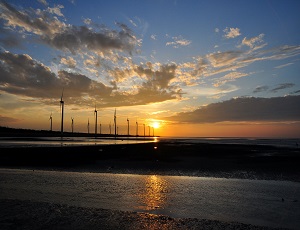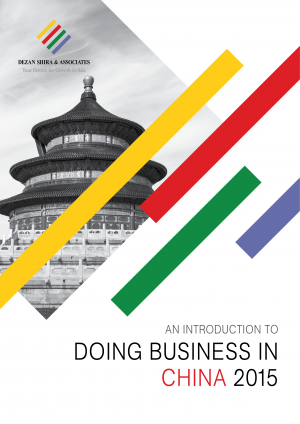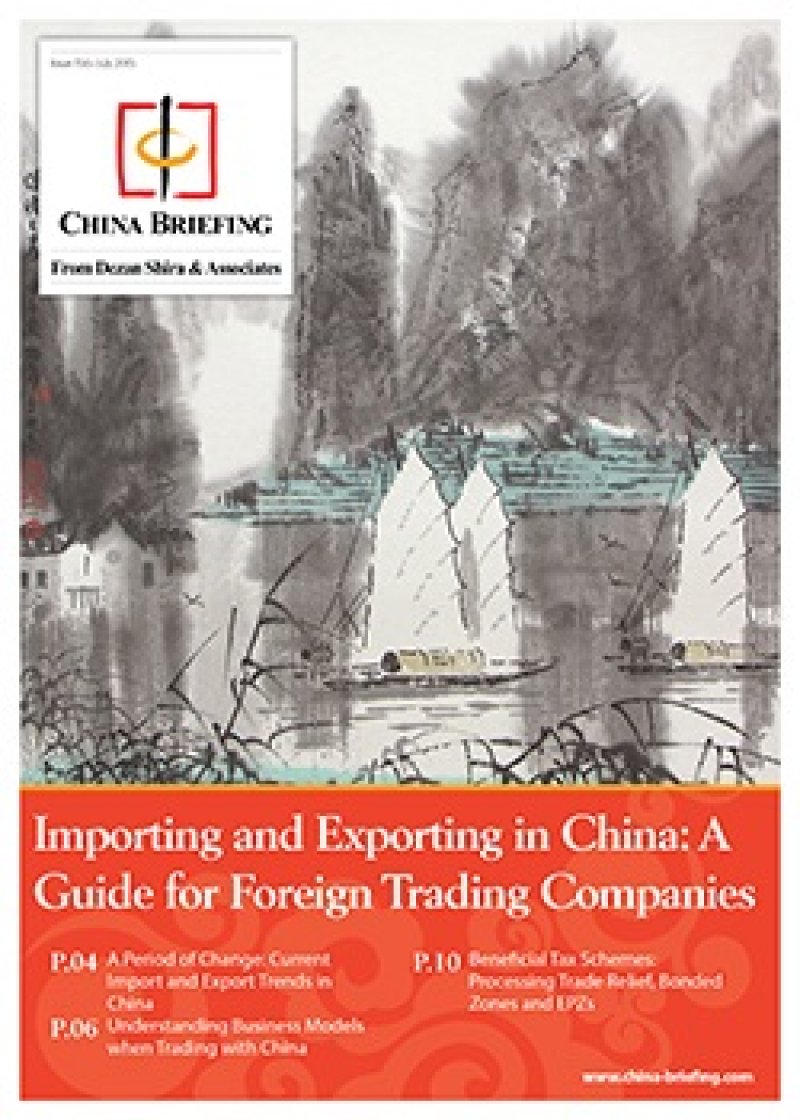China’s Wind Power Industry: a Dynamic Investment Opportunity, or an Opaque Market for Foreign Companies?
By Samuel Wrest
 China is expected to increase its wind power installed capacity from the current 149 gigawatts (GW) to 495 GW by 2030, according to a recently released report from GlobalData. This substantial rise would represent a Compound Annual Growth Rate (CAGR) of nine percent and is in line with plans laid out in China’s 13th Five Year Plan, which targets an increase in domestic wind capacity to 250 GW by 2020.
China is expected to increase its wind power installed capacity from the current 149 gigawatts (GW) to 495 GW by 2030, according to a recently released report from GlobalData. This substantial rise would represent a Compound Annual Growth Rate (CAGR) of nine percent and is in line with plans laid out in China’s 13th Five Year Plan, which targets an increase in domestic wind capacity to 250 GW by 2020.
China already dominates the global wind energy market. Last year, the country overtook the EU to become the industry world leader by adding 30.5 GW to its overall installations – fully half of what was installed worldwide in 2015. However, while wind power is undeniably a rising segment of the Chinese economy, the sector has experienced a sharp decrease in foreign participation over the past ten years. Despite having an attractive incentive framework for investment in place, 98 percent of the market is now controlled by domestic players compared to approximately 40 percent in 2006. With more growth predicted for the future, the question now posed to foreign alternative energy companies looking at China as a potential production base is how, and indeed if, to enter this dynamic yet seemingly unwelcoming market.
Market entry and incentives for investment
China classifies wind power as an encouraged area for investment, allowing foreign companies to establish wholly foreign-owned enterprises (WFOEs) in the industry. It is also classified as encouraged in Western China’s separate catalogue of industries, meaning investors who establish a wind power company in one of China’s Western provinces will pay 15 percent corporate income tax (CIT) instead of the standard 25 percent.
While foreign firms are able to establish WFOEs in the sector, many choose to enter into joint ventures (JVs) with domestic companies due to their monopoly of the market. A good example of this is Siemens, which entered into a JV with Shanghai Electric to produce 4MW offshore turbines in Jiangsu province.
Incentives exist in a multitude of different areas for both domestic and foreign wind power investment, which is widely identified as the primary driver behind China’s explosive growth in the industry. The most attractive policies concentrate on how wind power companies are taxed, which we look at in further detail below.
![]() RELATED: Business Advisory Services from Dezan Shira & Associates
RELATED: Business Advisory Services from Dezan Shira & Associates
CIT exemption and deduction
For the first three years from establishment, wind power companies in China are exempt from paying any CIT. For the next three years, their payable CIT is reduced by 50 percent.
Companies that produce wind power in China are also classified as high-tech enterprises, which allows them to pay 15 percent CIT rather than 25 percent. However, this benefit cannot be stacked on top of the CIT exemption and deduction above – companies must choose between the two benefits.
VAT refunds
Wind power products produced in China are eligible for a 50 percent refund on their VAT. In practice, this means that when a wind power company sells the energy that it produces, it is subsequently able to refund 50 percent of the VAT that was added to the sale price.
Import VAT exemption
Reflecting China’s current aim to create a greener economy, in 2009 the country began waiving import VAT on certain types of environmentally friendly manufacturing equipment. Equipment used for creating wind power is included in this list.
Challenges to the industry and foreign investors
The biggest challenge currently facing China’s wind power industry is converting its massive installed capacity into actual energy. The industry lacks a national legal apparatus that oversees quality control, contributing in part to 20 percent of power generated in 2015 being wasted and to China producing less wind energy than the U.S., despite having more installations. Aggressive capacity expansion by domestic companies that focus on short-term volume and market gains rather than long-term, sustainable development is a commonly cited reason for this low output, with grid bottlenecks commonplace due to the drastic increase in wind turbines without a corresponding increase in electrical grid infrastructure.
This overcrowding of the market by local firms and the resultant limitations it has placed on the industry is also the main deterrent to foreign investors. Liu Qi, the deputy general manager of the Siemens-Shanghai Electric JV mentioned earlier, commented at the China Wind Power conference in 2014 that “the biggest problem in the mainland market is the lack of a system [to ensure] quality development. After a round of expansion speed and volume chasing, some producers lacking in product quality have already disappeared.”
Following the rise of China’s domestic wind power producers in the mid-2000s, the majority of European and American wind power companies in the country have seen their market share slashed, with many forced to leave the market altogether. While the Siemens-Shanghai Electric JV is still in operation, and often held up as an example of a successful wind power joint venture, Liu Qi has noted that the partnership is not without its difficulties, citing high administrative costs and low efficiency as two of its biggest stumbling blocks.
![]() RELATED: Trash or Treasure? Prospects for China’s Recycling Industry
RELATED: Trash or Treasure? Prospects for China’s Recycling Industry
Prospects for the future
The need for wind power and alternative energy, both in China and internationally, has never been greater. April 2016 was the hottest April on record globally, and followed a string of recent temperature records worldwide. International scrutiny of pollution levels in China has also been high, with China’s issuance of its highest air quality alert at the tail end of last year widely covered in Western media.
China’s 13th Five Year Plan is the second to feature ambitious renewable energy targets for the country that, if fully delivered, will go some way to addressing climate issues in and beyond the country’s borders. Alongside the increase in domestic wind capacity to 250 GW by 2020, the plan also has a goal to boost overall clean energy to 20 percent of China’s energy mix before 2030.
This backdrop does little to negate the very real problems that currently exist for foreign investors in China’s wind power industry, but it does indicate that the investment landscape could change in the future. In order to meet its wind power and clean energy targets, China will need to expand and upgrade its electrical grid, following which companies will be able to see greater and faster returns on their investment. The development of this grid in itself is an area where foreign participation would likely be welcome.
Foreign investors can also look at other areas of the industry to channel their investment. Foreign makers of specialized components, for example, have been successful in the market in recent years, and after-sales services are becoming increasingly popular. It may therefore be that, for now, opportunities can best be found in niche sections of China’s wind power industry, and that foreign direct investment will become more profitable in the longer-term.
|
Asia Briefing Ltd. is a subsidiary of Dezan Shira & Associates. Dezan Shira is a specialist foreign direct investment practice, providing corporate establishment, business advisory, tax advisory and compliance, accounting, payroll, due diligence and financial review services to multinationals investing in China, Hong Kong, India, Vietnam, Singapore and the rest of ASEAN. For further information, please email china@dezshira.com or visit www.dezshira.com. Stay up to date with the latest business and investment trends in Asia by subscribing to our complimentary update service featuring news, commentary and regulatory insight. |

 An Introduction to Doing Business in China 2015
An Introduction to Doing Business in China 2015
Doing Business in China 2015 is designed to introduce the fundamentals of investing in China. Compiled by the professionals at Dezan Shira & Associates, this comprehensive guide is ideal not only for businesses looking to enter the Chinese market, but also for companies that already have a presence here and want to keep up-to-date with the most recent and relevant policy changes.
 Selling, Sourcing and E-Commerce in China 2016 (First Edition)
Selling, Sourcing and E-Commerce in China 2016 (First Edition)
This guide, produced in collaboration with the experts at Dezan Shira & Associates, provides a comprehensive analysis of all these aspects of commerce in China. It discusses how foreign companies can best go about sourcing products from China; how foreign retailers can set up operations on the ground to sell directly to the country’s massive consumer class; and finally details how foreign enterprises can access China’s lucrative yet ostensibly complex e-commerce market.
Importing and Exporting in China: a Guide for Trading Companies
In this issue of China Briefing, we discuss the latest import and export trends in China, and analyze the ways in which a foreign company in China can properly prepare for the import/export process. With import taxes and duties adding a significant cost burden, we explain how this system works in China, and highlight some of the tax incentives that the Chinese government has put in place to help stimulate trade.
- Previous Article The Importance of Network Security in China
- Next Article China’s Resource Tax Reform Presents New Opportunities and Restrictions in the Mining Sector










